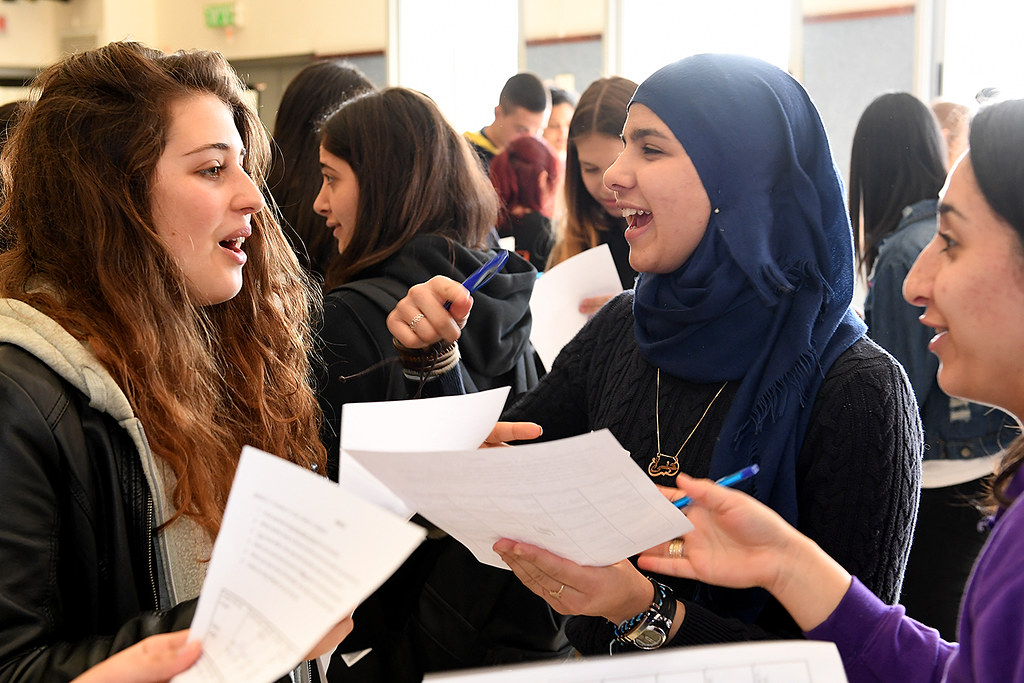Australia/Israel Review
Deconstruction Zone: Israel’s Minority Report
Jun 30, 2023 | Hussain Abdul-Hussain

Palestinian propagandists want you to believe that Israel is engaged in the “ethnic cleansing” of non-Jews. A closer look at demographics, however, proves otherwise.
On the occasion of Jerusalem Day last month, the Israeli Central Bureau of Statistics published numbers showing that close to 40% of the residents of Jerusalem are Arabs, a level unchanged since a census was taken as far back as 1947 – a year before the founding of the state. Israel is a Jewish state. Its minorities are Arab: Muslim, Christian, and Druze. Their numbers have grown steadily along with the country’s overall population.
In areas under the control of the Palestinian Authority (PA), everyone is Arab. Muslims are the majority and Christians a dwindling minority that fears for its security. In neighbouring Lebanon, whose population is overwhelmingly Arab, Christians were a majority when the state was founded in 1920, although not anymore. If one asks where minorities thrive in the Middle East, the answer is Israel.
The percentage of Christians living in areas now under the PA has been declining rapidly, from 51,000 out of 435,000 in 1949 – or 12% – to one percent in 2017. Christians are now minorities in Palestinian cities where they had historically maintained a majority. In Bethlehem, they shrank from 84% in 1922 to 28% in 2007, when the PA carried out a major census. For the same period, in the West Bank towns of Beit Jala and Beit Sahour, Christians de- creased from 99% and 81% to 81% and 65%, respectively. In 2020, when the Palestinian Centre for Policy and Survey Research (PCPSR) asked Christian Palestinians “how they felt under Israeli occupation,” 70% responded that they felt safe, 94% said they were free to travel, and 57% said they never felt harassed when crossing Israeli checkpoints.
If Israel does not make Christian Palestinians feel unsafe, then who does? According to PCPSR, 87% of Christians worried about a surge in crime in PA territory, 77% feared radical Islamist groups, including Hamas, and 67% of Pales- tinian Christians said they felt unsettled about a provision in the Palestinian Basic Law that stipulates that “the principles of Islamic sharia are a main source of legislation.” Admittedly, the number of Arab Christians in Israel has declined, but only by one percentage point, from 2.9% in 1949 to 1.9% in 2021. Interestingly, the decrease in the number of Christians mirrors that of the Jewish majority. Both communities have been outpaced by the rapid increase in the number of Muslims. Therefore, while the populations of Jewish and Christian Israelis grew, their share of the population shrank.
Christians of the Middle East have not been vanishing from Palestinian cities only. To the north, in neighbouring Lebanon, the percentage of Christians since 1932 has shrunk by nearly 20 percentage points, from 53 to 34%. The Lebanese population has grown substantially since 1932, from 790,000 to roughly five million. But the relative size of different groups has changed dramatically.
The Druze, once the rulers of Lebanon between the 16th and 19th centuries, saw their share of the population decline from 6.7% in 1932 to 5.5% today. Meanwhile, their coreligionists in Israel enjoyed a tenfold increase in their numbers between 1949 and today, so the size of the Druze community kept up with the Jewish state’s overall population growth. Their share of the population has held constant at 1.6% since 1949.
One Lebanese minority has all but vanished: The Jews. Lebanon’s Jews numbered some 3,600 in 1932, or 0.5% of the population. Today, they stand officially at 0.11%, or 4,000 in total, according to voter lists. But those figures are a bureaucratic fiction. Efforts to locate actual Lebanese Jews have turned up fewer than thirty.
Had the Jews of Lebanon grown demographically at the same rate as Shi’ites, they would have numbered some 35,000 today. But in Lebanon, Jews have not been welcome since the birth of Israel in 1948.
By contrast, Israel today is the only Middle Eastern country that affords equal rights to Muslims, Christians, and Druze. And while the system is far from perfect, the numbers of these minorities reflect a heartening reality. Israel’s demographics are holding steady. So much for “ethnic cleansing”.
Hussain Abdul-Hussain is a research fellow at the Foundation for the Defense of Democracies (FDD), a non-partisan organisation focused on national security and foreign policy. He was born in Lebanon. © Times of Israel (timesofisrael.com), reprinted by permission, all rights reserved.
Tags: Arab Israelis, Israel, Palestinians






